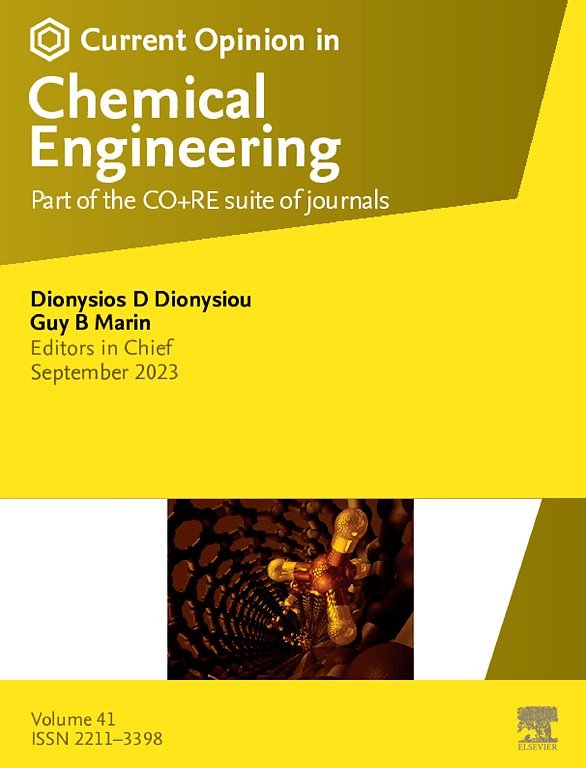海洋中的塑料碳
IF 6.8
2区 工程技术
Q1 BIOTECHNOLOGY & APPLIED MICROBIOLOGY
引用次数: 0
摘要
每年涌入海洋的约1100万吨塑料碎片对全球海洋环境构成了严重且日益严重的威胁。此外,塑料碎片是海洋生态系统的外来碳来源,这一因素最近才引起科学界的关注。在此,我们综合了海洋中这种新形式的塑料碳的最新证据,将其分为三个组成部分:塑料颗粒有机碳(pPOC),塑料溶出有机碳(pDOC)和塑料附着生物膜的生物源有机碳(pBOC)。目前对pPOC和pDOC的估计只占海洋天然碳库的一小部分,但它们的比例预计会增加。pDOC是高度非均相的,因聚合物类型而异,并已被证明影响海水生物地球化学以及微生物群落的结构和功能。此外,生物膜生物量在塑料碎片上定植,可以利用pPOC和pDOC作为碳源。目前的证据表明,塑料碳进入微生物生物量,从而影响碳和氮循环。鉴于这些新发现,我们进一步提出了具体的研究问题,旨在促进对海洋中塑料碳的性质、动态和作用的研究。本文章由计算机程序翻译,如有差异,请以英文原文为准。
Plastic carbon in the ocean
The annual influx of ∼11 million metric tons of plastic debris into the ocean poses a significant and growing threat to the marine environment globally. Additionally, plastic debris serves as a source of allochthonous carbon to marine ecosystems — a factor that has only drawn scientific attention recently. Herein, we synthesize recent evidence about this new form of plastic carbon in the ocean by addressing it as three components: particulate organic carbon of plastic (pPOC), dissolved organic carbon leaching from plastic (pDOC), and biogenic organic carbon of plastic-attached biofilm (pBOC). Current estimates of pPOC and pDOC account for only a modest fraction of natural carbon pool in the ocean, but their portions are expected to increase. pDOC is highly heterogenous, varying by polymer types, and has been shown to influence seawater biogeochemistry as well as the structure and function of microbial communities. Furthermore, biofilm biomass colonizing on plastic debris can utilize the pPOC and pDOC as carbon sources. Current evidences proved the incorporation of plastic carbon into microbial biomass, which consequently affects the carbon and nitrogen cycling. Given these emerging insights, we further suggest specific research questions aimed at stimulating research on the nature, dynamics, and role of plastic carbon in the ocean.
求助全文
通过发布文献求助,成功后即可免费获取论文全文。
去求助
来源期刊

Current Opinion in Chemical Engineering
BIOTECHNOLOGY & APPLIED MICROBIOLOGYENGINE-ENGINEERING, CHEMICAL
CiteScore
12.80
自引率
3.00%
发文量
114
期刊介绍:
Current Opinion in Chemical Engineering is devoted to bringing forth short and focused review articles written by experts on current advances in different areas of chemical engineering. Only invited review articles will be published.
The goals of each review article in Current Opinion in Chemical Engineering are:
1. To acquaint the reader/researcher with the most important recent papers in the given topic.
2. To provide the reader with the views/opinions of the expert in each topic.
The reviews are short (about 2500 words or 5-10 printed pages with figures) and serve as an invaluable source of information for researchers, teachers, professionals and students. The reviews also aim to stimulate exchange of ideas among experts.
Themed sections:
Each review will focus on particular aspects of one of the following themed sections of chemical engineering:
1. Nanotechnology
2. Energy and environmental engineering
3. Biotechnology and bioprocess engineering
4. Biological engineering (covering tissue engineering, regenerative medicine, drug delivery)
5. Separation engineering (covering membrane technologies, adsorbents, desalination, distillation etc.)
6. Materials engineering (covering biomaterials, inorganic especially ceramic materials, nanostructured materials).
7. Process systems engineering
8. Reaction engineering and catalysis.
 求助内容:
求助内容: 应助结果提醒方式:
应助结果提醒方式:


